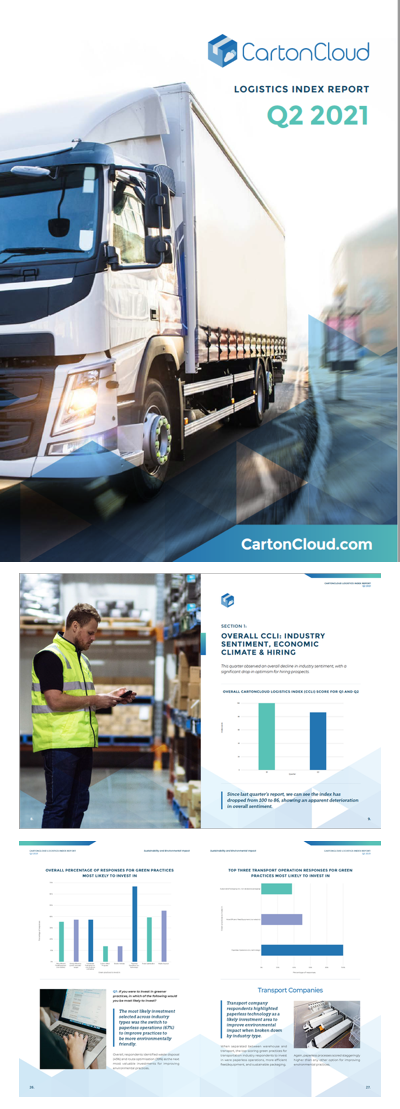Every business now has access to mountains of data about their customers, their products and their industry. Mining that data and using it to create exciting and engaging content has become one of the most important ways to supercharge your media outreach strategy and build your reputation as an industry leader.
Branded data is any form or data you use to share with an audience to demonstrate your understanding of your customers’ needs, industry trends or product effectiveness. It can include almost any type of quantitative or qualitative data like customer surveys, market reports and product performance information.
At RGC, we work closely with brands like CartonCloud to develop branded data opportunities like the CartonCloud Logistics Index and real estate services group Oliver Hume on their Quarterly Market Insights report. On a larger scale, you can look at the success of things like the ANZ Job Ads survey or NAB’s Monthly Business Survey to see the value of branded data as a brand-building exercise.
Create News Flow
Increasing media consolidation, networking and the ‘pay to play’ attitude of niche publishers makes building a media profile harder than ever. Stories and ideas that were newsworthy five or ten years ago now routinely end up on the digital spike in newsrooms. As a result, identifying and executing earned media opportunities with a consistent cut through is the greatest challenge of any PR campaign.
The greatest challenge of maintaining an ongoing earned media campaign for many brands is generating a consistent flow of newsworthy stories.
Looking inwards at your proprietary data and compiling it into a tool for media outreach is not just a great way to fill holes in your PR plan but can be the foundation of your entire efforts.
Feed The Machine

Even through the relatively narrow lens of earned media, branded data, done well, has an extraordinary ability to grow brand awareness and affinity. When you couple its earned media potential with other channels, the return on investment in quality branded data is well worth the extra effort required to do it well.
Effective marketing strategies have a voracious need for content. Your newsletters, social platforms, blogs, and website require a continuous stream of new content to keep them fresh and engaging. Breaking your data down to bite-size pieces can turn one piece of content into many. Turning a detailed report with seven data points into seven (or 14) different social media posts doesn’t require too much effort.
Go Beyond Surveys
When companies consider data as an earned media tool, most don’t get past a customer survey. These surveys are great for targeting specific audiences and investigating particular themes, but they can also be expensive, particularly for brands with modest marketing budgets.
It is well worth mining your proprietary data to create media outreach opportunities. Proprietary data is the information you already have on hand to tell a story about your business or industry. Australia’s largest real estate listing sites realestate.com.au and domain.com.au, are great examples of using their proprietary data to create valuable insights for their audiences.
Proprietary data is powerful because only your company has access to it, so insights drawn from it are inherently unique. Moreover, there’s also no additional investment required to collect this data because it’s already on hand.
That said, engineers don’t necessarily design their platforms for the purposes of data collection for the media. As a result, it can sometimes be challenging to pull standardised proprietary data that supports the story your brand wants to tell. This data can also be limited by the scope of a company’s platform.
While there can be challenges, crafting a story from proprietary data remains an excellent PR tool. The use of data in media relations is becoming more common, so it’s important that data is positioned correctly to the media and provides real value to journalists to stand out.
There are four key steps in generating media coverage that leverages proprietary data:
- Imagine your perfect headline. Start where you want to finish and work backwards from a great headline. Beginning the branded content process with the result in mind makes it easier to sift through data to uncover relevant insights that can tell that story.
- Understand your audience’s needs. Once you’ve identified the significant conversations in your industry, you can evaluate where your company’s data can support reporting on these trends and provide a new perspective or additional context.
- Mine and simplify your data. Data can be complex, and breaking it down into easy to understand terms is essential to amplifying its value. A great way to make data more understandable is to present it visually, so infographics, tables and graphs can be valuable tools.
- Understand your target media’s needs. Then, once you’ve built a story supported by your data, identify media contacts who would find these insights interesting and relevant to their reporting and determine your outreach plan.
Of course, the key to using your branded data, like all media outreach, is ensuring you are telling stories or imparting insights that are interesting to your audience. Creating or mining data is a waste of time unless you can package it into “news you can use”. This can only be achieved if you understand your audience and the problems you need to solve for them.


